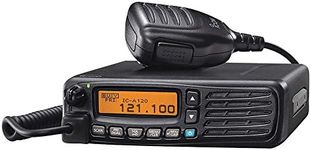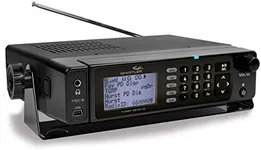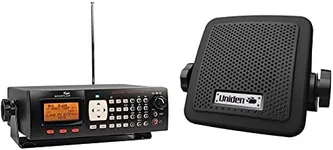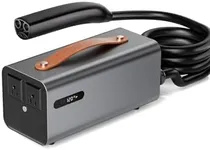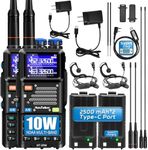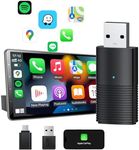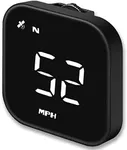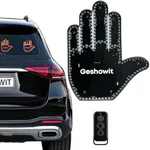Buying Guide for the Best Aviation Radio Scanner
Choosing the right aviation radio scanner can be a bit overwhelming, but with the right knowledge, you can find the perfect one to suit your needs. An aviation radio scanner allows you to listen to communications between aircraft and air traffic control, which can be fascinating for aviation enthusiasts, pilots, and even those who live near airports. To make an informed decision, you need to understand the key specifications and how they impact the performance and usability of the scanner. Here are the main specs to consider and how to choose the best one for you.Frequency RangeThe frequency range of an aviation radio scanner determines the range of signals it can pick up. This is important because different types of communications occur on different frequencies. Aviation scanners typically cover the VHF (Very High Frequency) range, which is used for most aviation communications. Some advanced models also cover UHF (Ultra High Frequency) for military and other specialized communications. If you are mainly interested in commercial aviation, a scanner with a VHF range of 108-137 MHz will suffice. However, if you want to listen to a broader range of communications, including military, look for a scanner that also includes UHF frequencies.
Channel MemoryChannel memory refers to the number of frequencies that the scanner can store and recall. This is important because it allows you to quickly access your favorite frequencies without having to manually tune them each time. Scanners with more channel memory can store more frequencies, which is useful if you want to monitor multiple channels. For casual listeners, a scanner with 100-200 channels may be sufficient. For more serious enthusiasts who want to monitor a wide range of frequencies, look for a scanner with 500 or more channels.
Scan SpeedScan speed is the rate at which the scanner cycles through the stored frequencies. A faster scan speed means the scanner can check more frequencies in a shorter amount of time, increasing the likelihood of catching active communications. This is particularly important if you are monitoring busy airspace with a lot of traffic. Typical scan speeds range from 20 to 100 channels per second. For most users, a scan speed of around 50 channels per second is adequate, but if you want to ensure you don't miss any communications, opt for a scanner with a higher scan speed.
SensitivitySensitivity refers to the scanner's ability to pick up weak signals. Higher sensitivity means the scanner can detect signals from farther away or those that are weaker. This is important if you want to listen to communications from aircraft that are not in close proximity to your location. Sensitivity is usually measured in microvolts (µV). A lower number indicates higher sensitivity. For general use, a sensitivity of around 0.5 µV is good, but if you are in a remote area or want to pick up distant signals, look for a scanner with a sensitivity of 0.3 µV or better.
Display and InterfaceThe display and interface of the scanner affect how easy it is to use. A clear, backlit display is important for viewing information in different lighting conditions. The interface should be intuitive, with easy-to-navigate menus and controls. This is especially important if you are new to using radio scanners. Look for a scanner with a large, easy-to-read display and straightforward controls. Some models also offer programmable buttons and customizable settings, which can enhance usability.
PortabilityPortability refers to the size and weight of the scanner, as well as its power options. If you plan to use the scanner on the go, a compact, lightweight model with battery power is ideal. For home use, a larger, desktop model with AC power may be more suitable. Consider how and where you will be using the scanner to determine the best option for you. Portable models are great for taking to airshows or spotting locations, while desktop models are better for stationary use.
Additional FeaturesAdditional features can enhance the functionality and convenience of the scanner. Some useful features to look for include weather alerts, which can provide real-time weather updates, and Close Call or Signal Stalker, which automatically detects nearby transmissions. Other features like programmable search ranges, priority channels, and trunking capabilities can also be beneficial depending on your needs. Consider which additional features are important to you and choose a scanner that offers those options.



